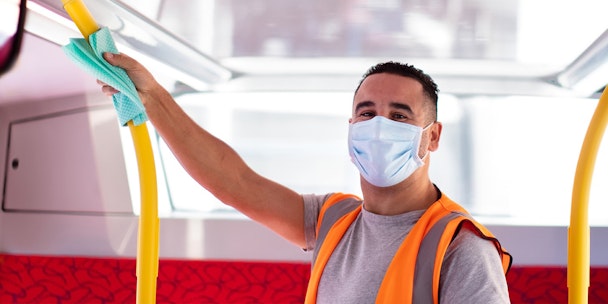TfL left to mind a widening ad revenue gap as income slumps £100m
Transport for London (TfL) has seen its advertising revenue go down the tube as stay-at-home commuters shun the capital’s transport network, opening up an estimated £900m funding shortfall for the year.

Since the onset of the pandemic, TfL has had to be bailed out by the government to the tune of £4bn
Slumping passenger numbers have precipitated a £100m decline in commercial revenue across the TfL network as ordinarily packed buses, trains and subways empty.
A collapse in the volume of commuters and tourists has had an inevitable knock-on impact on an expansive advertising network of 100,000 billboards, posters and panels scattered across platform walls, bus shelters and carriages as advertisers follow their quarry through the exit doors, taking their budgets with them.
As a result, TfL has seen its advertising income collapse from £158.3m in 2019 to a paltry £50m in the year to the end of March, kept alive by several notable product and entertainment promotions including the blockbuster launch of the PlayStation 5, a timely hand sanitiser program sponsored by Dettol and the promotion of Netflix programming.
Ironically, TfL has played an active role in eroding its advertising business through the display of government stay-at-home messaging, further thinning out passenger numbers in a selfless display of ‘reverse marketing’.
Chris Macleod, TfL’s outgoing customer and revenue director, told the Guardian: “It has been likened to reverse marketing. Essentially, we sell eyeballs as a commercial package and when we encouraged people to follow government guidelines and not travel that, of course, hurt us. From an anti-marketing point of view, it was a great success – passenger numbers on the tube fell 90%. But the read-across to the commercial world was, of course, not great.”
This follows a self-imposed ban on ‘junk food’ products, which saw transport bosses reject 55 ads submitted by brands in 2020, but MacLeod disputes whether this had any material impact on the business: “It is not a category ban – the policy has worked. Revenues are down because of Covid, not because of our ban on high in fat, salt or sugar products or anything else like that.”
Political and social campaigns provide a vital revenue stream in lean times, with 1,448 separate government campaigns pushing the category ahead of waning retail campaigns (1,207) as well as moribund entertainment and leisure promotions (1,029).
Since the onset of the pandemic, TfL has had to be bailed out by the government to the tune of £4bn, highlighting that declining ad revenues are a mere drop in an ocean of debt. There is light at the end of the tunnel, however, with tube traffic back to 45% of pre-pandemic levels during the week (56% at weekends) and bus patronage back up to 65%.
If these trends continue it is hoped TfL ridership levels could hit around 80% by next March, sparking hope that advertisers will follow suit.
Content created with:

TfL
Transport for London is the authority responsible for operating transport services in Greater London, including the London Underground, London buses, and TfL Ra...
Find out more
